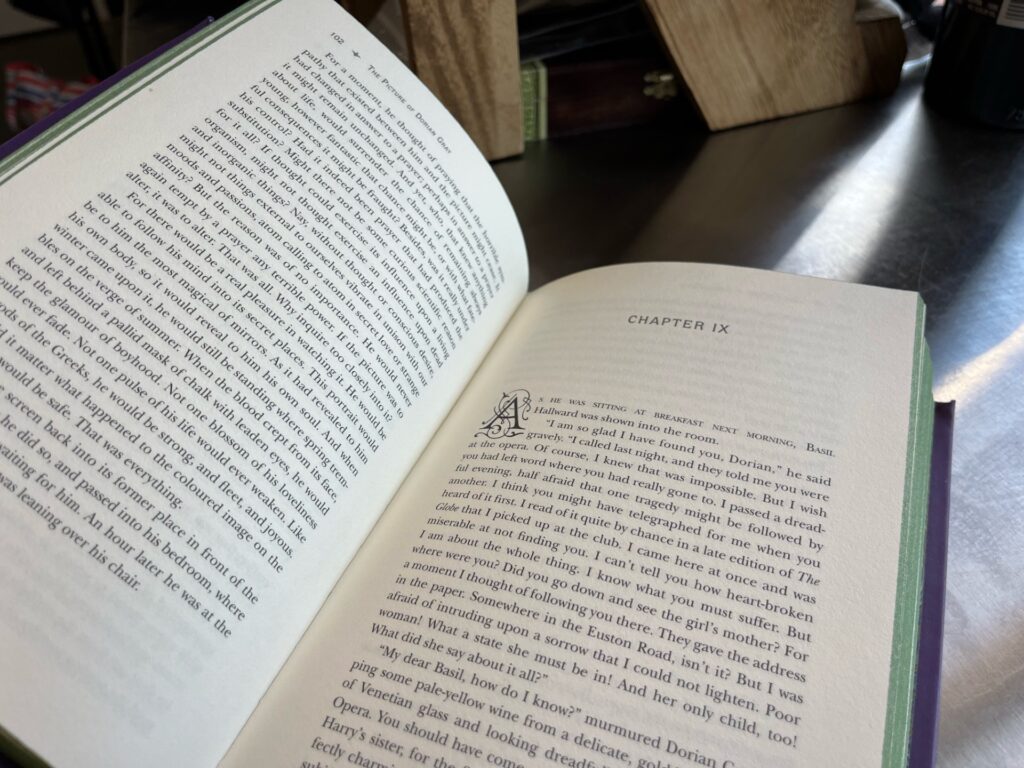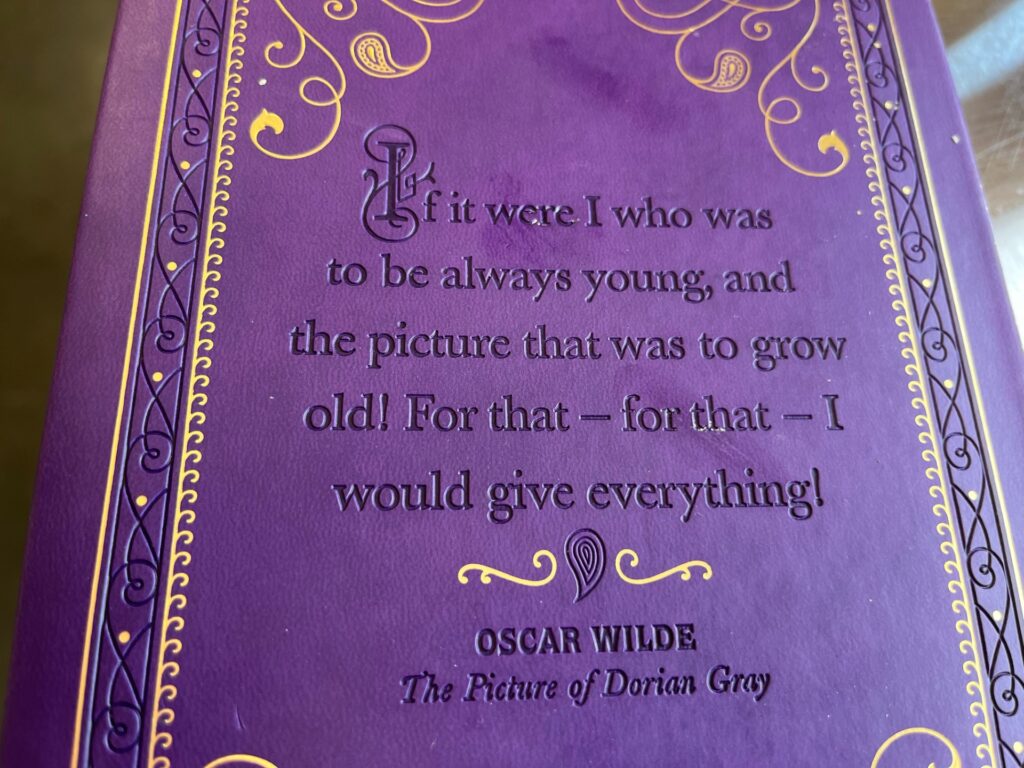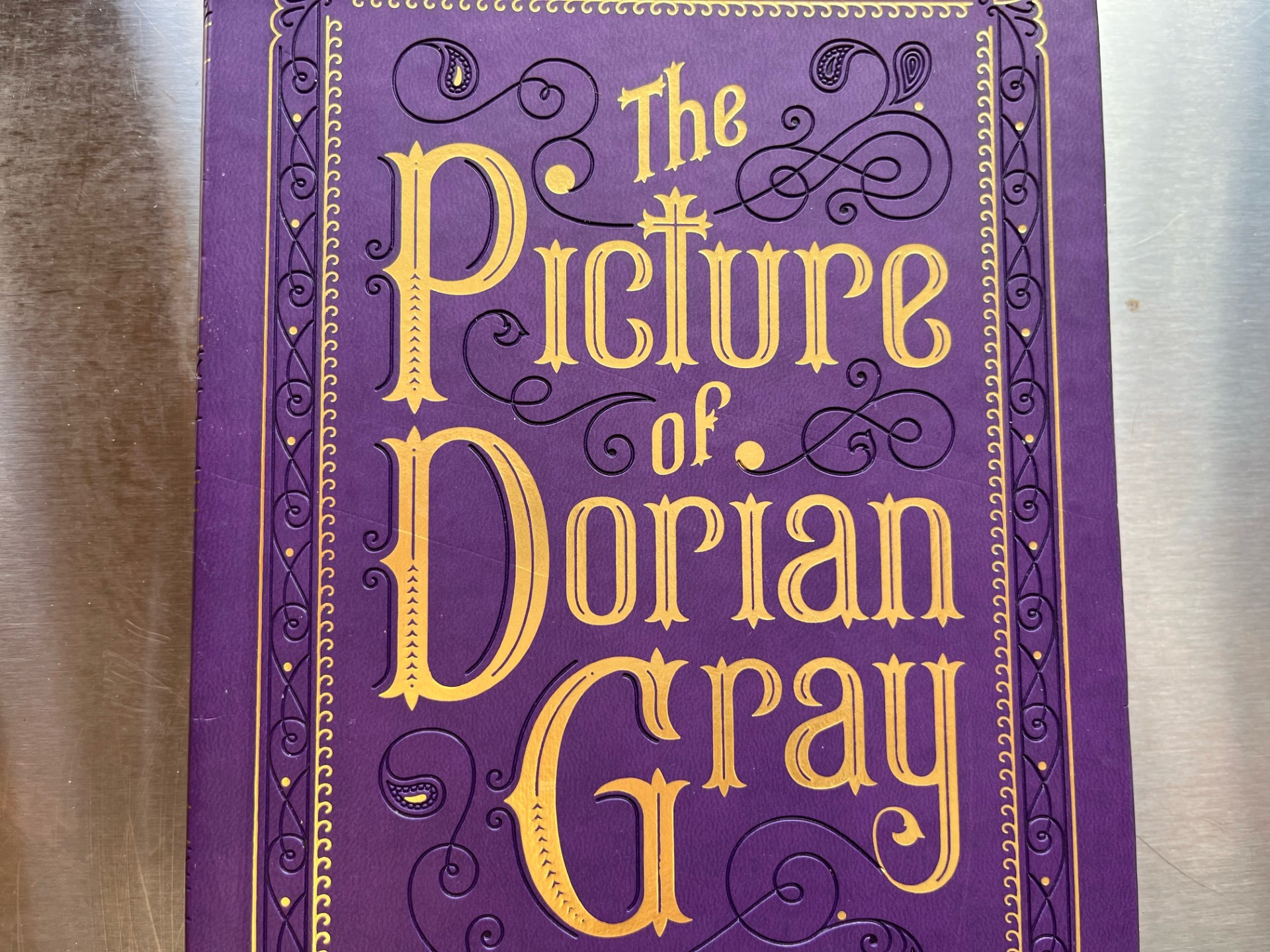“I don’t want to be at the mercy of my emotions. I want to use them, to enjoy them, and to dominate them.”
When I began this classic, my expectations were pretty low. It seemed like one of those dense, old-timey books in which not a whole lot happens but quite a few pages are taken up. I was so surprised at how thought-provoking and truly convicting the book was. It applies to our modern culture in so many ways and truly opened my eyes to the way our world is twisted. The concepts this story describes will play in your mind for a long time.
Background
While it gets off to a slow start, the basic story that happens in The Picture of Dorian Gray is quite interesting. Dorian Gray is a young, incredibly good-looking heir. His appearance so impresses an artist that he becomes close friends with Dorian and asks to paint a portrait of him. When he is finished, the words of a mutual friend of theirs causes Dorian to realize his incredible beauty as he gazes upon the portrait. Tortured by the thought that he will lose this beauty as he grows older, he makes a thoughtless wish that he will remain young and beautiful and the portrait will be the one to grow old and ugly.

Not long after that, he falls in love with a beautiful and talented actress. The girl is very young and lacks a lot of knowledge about the world outside the stage. She immediately agrees when he asks for her hand in marriage. However, the next day she acts very badly in her play. When he confronts her about it, she explains that he has shown her there is more to the world than acting and she is no longer so dedicated to her art. He immediately rejects her completely and removes his love for her. The next day he finds out that she committed suicide because of his cruelty. He dismisses this information apathetically and continues on with his life. Later, he discovers that his beautiful portrait is displaying an expression of absolute cruelty it did not feature before.
He realizes that not only has his wish caused the portrait to grow old even as he keeps his youth forever, but that every sin or blot of character that he commits will be captured in the portrait while he keeps his appearance of innocence. This discovery causes him to begin leading a terrible life, doing things without regret. He developed an obsessive personality and a habit of being extremely protective of his private life. However, because of his good looks, innocent appearance, and youthfulness he remained popular in all of his social circles.
This finally leads him in a desperate act to brutally murder the friend who painted his condemning portrait. He is effectively able to cover up his crime, but it leads to much pain and suffering for him and his friends. The brother of the girl that, years ago, had killed herself over him finds him and begins to hunt them. The man is accidentally killed in the process of chasing him, and this makes him start to feel remorse over the twisted life he has led. He finally resolves to try and destroy the portrait but doing so kills his own body, and he pays his life for his sins.

Major Themes
“There was something terribly enthralling in the exercise of influence. No other activity was like it. To project one’s soul into some gracious form, and let it tarry there for a moment; to hear one’s own intellectual views echoed back to one with all the added music of passion and youth;”
Oscar Wilde
One of the huge themes presented in the storyline is the importance and effect of influence that we all have over one another. Dorian first becomes vain and self-centered because of his friends controversial words. His friend gets a delight from speaking of ideas that are not necessarily wholesome and seeing how his listeners act with these new opinions. He overtime moves Dorian away from morality and encourages him towards a life built on pleasure. In addition, he recommends Dorian a book that Wilde suggests as Dorian’s most prominent shove towards ruin. The book encourages his obsessive delight in pleasure and dismisses morals completely.
In turn, Dorian holds influence over several young men in his community. Other characters express great concern over the fall in character and happiness that the men who worship this handsome icon experience. Several are mentioned who have their lives and careers ruined, fall into depression, or even commit suicide. Overall, the book is very clear that everyone has influence over others, and this has a domino effect that can lead to disaster. It also shows how some people can greatly enjoy being a bad influence, especially over those who are young and susceptible.
“I have never searched for happiness. Who wants happiness? I have searched for pleasure.”
Dorian Gray
We live in a culture obsessed with pleasure. What you eat, where you work, the kind of things you buy, and the choices you make are all expected to be catered to you personal enjoyment and pleasure. But something that we often forget is that pleasure does not in anyway equate to happiness. The Picture of Dorian Gray is very clear on this. Dorian spends a huge amount of his time searching for pleasures, experimenting with them, and comparing them. Most of his sins are done with the end of pleasure in mind. He is constantly using women, entertainment, riches, and art to give his body the feelings it desires.
And yet, Dorian is one of the least happy people out there, something he recognizes and is even willing to admit. He cannot feel any deep emotions because of the threat of displeasure that doing so would bring. He has no meaning in his life and floats from thing to thing. His friendships are shallow and distant. He is constantly haunted by the fear of someone finding his portrait and revealing the ugliness he carries with him. Every choice he makes is colored by this fear and lack of purpose. No beauty or pleasure can save him from that.

“Sin is a thing that writes itself across a man’s face. It cannot be concealed.”
Dorian Gray
Dorian is given the opportunity to do whatever he wants without it affecting his reputation or appearance. The picture of how is freely committed sins affect that appearance is fascinating. Every time his character grows into a habit of some kind of evil or commits some particularly bad deed without repentance, it paints itself across his features. This completely unrestrained sin leads to an ugly, horrible creature shocking in comparison to the handsome Dorian outside of the portrait.
Believing that his actions lack consequences is probably the greatest contributor to Dorian’s lifestyle. He even displays heavy pride at how horrible he can make the man in the picture look. However, we are clearly shown that sin’s consequences will catch up to any man, even if it does not come until death. When Dorian tries to destroy the picture, it destroys himself as well. And as he lays there dead on the floor, his rightful appearance is returned to him for all to see.
I was shocked with the Biblical elements that were present in this book and how closely it mirrors our own age. It shows so well how sin truly is, even for people who have every reason to think they can get away with it. It does not ever just disappear. Our culture is one that is completely centered around pleasure and beauty and it has become so rooted that we often fall into that world view unintentionally. We have to stand out guard against the influences of this world that steal our happiness and lie to us about our purpose.
